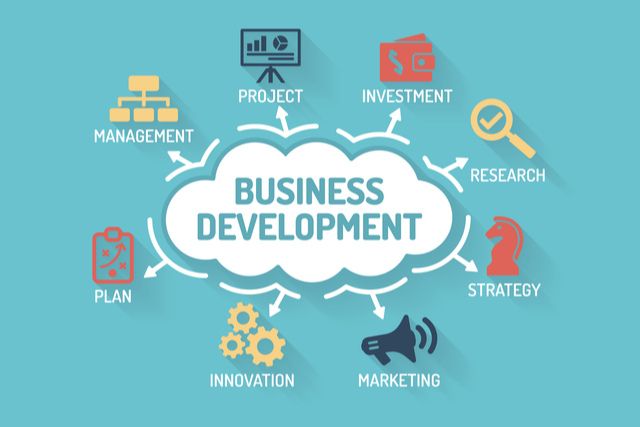
In my 30+ years working in marketing, strategy and strategic business development, I’ve noticed that a lot of businesses have substantial growth opportunities that they simply aren’t seeing, let alone taking.
Often, that’s because they don’t have a true strategic approach nor methodology and therefore do not fully factor in thinking about the market they’re in and moving into new ones, the various options that they could consider, or the needs and wants of their existing or prospective customers.
In some cases, they aren’t even sure who their customers are, or confuse the people they should be targeting – which can be a particular challenge in the B2B space. Naturally, that can lead to lower-than-forecasted sales, or a plateauing business where the inability to grow the numbers confounds all involved. It is no good making a lot of tactical actions without a clear strategic view of the market place and options.
A good example might be a business endeavouring to sell a premium piece of equipment into automotive or aerospace businesses. If the selling business relies on being approached by their existing buyer contacts, or just their historic network, they might find it difficult to grow sales of the equipment. Corporate buyers, after all, tend to shop around based on price and getting the best deal, and much of the time they change positions every few years.
However, if that business instead creates a corporate level strategy targeting engineers in those companies, technical experts, and people that understand the benefits of quality, accuracy, and similar, and they explain the market-leading qualities of the equipment (like higher tolerances or more efficient performance than the industry average), they’ll be far more likely to find success selling a premium product for a higher than average market value. If you don’t you are likely to end up being one of several just competing on price.

Here, I’ll walk you through my process to implementing strategy and business development plans, and explain how it could help your operation.
How do you implement a business development strategy?
Development of strategic plans isn’t simply a case of getting a company’s important players together and working out your priorities and approach. Instead, I adopt a thorough six-phase approach that factors in crucial commercial considerations for the short, medium and even longer term.
PHASE 1: DISCOVERY AND ASSESSMENT
1. Assessment and exploration
As the first step in building a solid strategic plan to develop the business, I work to understand the company; both where it is, and where it wants to go. Working with senior business partners I’ll get a sense of its operational strategies, business model, finances and distribution considerations, and some of the market assumptions it bases its business upon. I’ll also identify the resources it has most readily at its disposal, and the near term needs it needs to consider, like legal considerations and the company’s overall corporate identity. From all of this work, I’ll gauge an understanding of the business’s values and goals, and how congruently it operates with them – along with the obvious areas for improvement.
2. Market intelligence
The second phase of the business strategy plan creation involves deep-diving into the market in which the business operates. Here, I’ll assess the industry and market in-depth, looking at potential growth and profitability, the barriers to entry, and who the business might be able to forge strategic partnerships with for mutual benefit.
I’ll also conduct a comprehensive competitive review of products, pricing and messaging, and look to gain a deep understanding of the company’s customer base by using personas, market segmentation, and by getting an overview of the company’s position in the market relative to its competitors.
3. SWOT: Strengths, Weaknesses, Opportunities and Threats
The final part of the discovery phase, a SWOT analysis is an important part of business strategic development as it helps a business establish the things it does well and not so well. It also helps to gauge the key growth opportunities available to the business, and the risks they present. A business strategic plan can then include measures to mitigate those risks, while capitalising on the most promising commercial avenues.
During this phase I’ll also examine a company’s culture and establish where its people’s skills, its working processes, and the resources it has available can be of considerable benefit. This forms part of a value chain analysis, that combines with the rest into an in-depth SWOT analysis that can be used to lead into phase two.
PHASE 2: VALIDATION
4. Business model value proposition
Having spent stages 1-3 getting a clear appraisal of the business, we can now start looking tangibly toward the future.
In this stage of the business strategic development I’ll work with the board and/or senior level management to develop a three-year business and financial model. I’ll also work with managers across the business to more clearly articulate what the company’s value proposition messaging should be moving forwards, and begin thinking about both distribution models and pricing strategy. All of this put together will lay the foundation of a strategic framework that can set up stages five and, eventually, six.
5. Customer validation

The whole point of stage five is to bring the business to a place where it has clear pricing and sales models. At this stage the company’s value proposition, distribution model, pricing and sales approach will all be detailed and thought-out, ready to go into…
PHASE 3: FINAL PLAN / IMPLEMENTATION
6. Business strategy and planning
This is where all of the research to this point bears fruit and the full business development plan really comes to life.
This stage takes everything that’s been discussed previously and lays it out in a tangible plan. It also factors in key performance indicators (KPIs) and how to measure them, plus a contingency planning strategy for if things don’t go to plan.
The overall business strategy plan I come up with lays out a way forward for the business’s marketing, branding, distribution and resources. Together, they create a roadmap for a business to move forwards, often expanding into new markets and developing new products that can reach a lucrative new customer base.
Need to implement a strategy and business development plans in your business?
If you’re in the process of redirecting your business or expanding into new markets, you can use this article as a kind of strategic plan template to help you in moving forwards.
However, if you’ve decided you could use a helping hand accelerating company growth, I’ll be happy to have a conversation about how I could help.
Take a look at the sectors I specialise in, and read the blogs below for more insights into my experience and contacts. To explore working with me, get in touch today.
Further Reading
- What Can an Interim Marketing Director Do For You?
- The Big Benefits of Hiring a Marketing Consultant
- Food & Drink: Launching New Products in a Packed Marketplace
- Claiming Back Money for New Product Development
- Improving Efficiencies in your Food Production Business
- Why Innovation Means Big Money for Businesses
